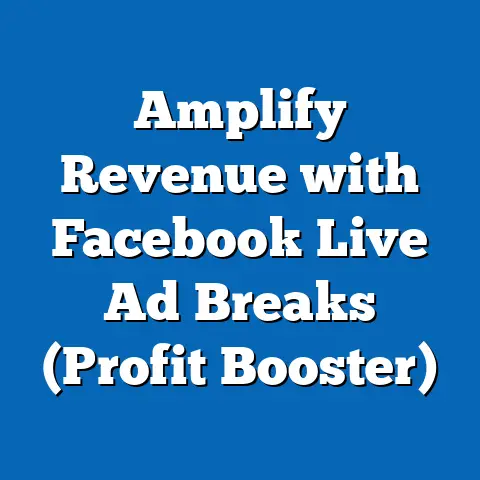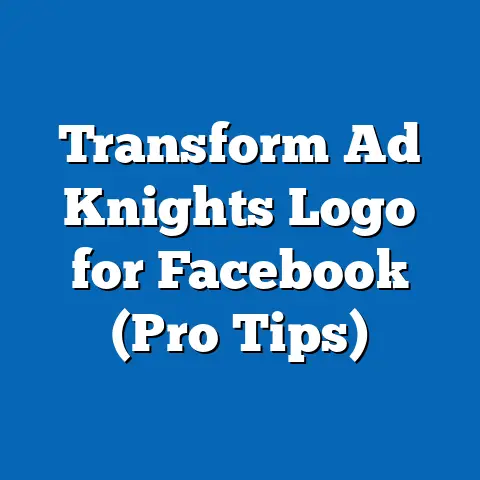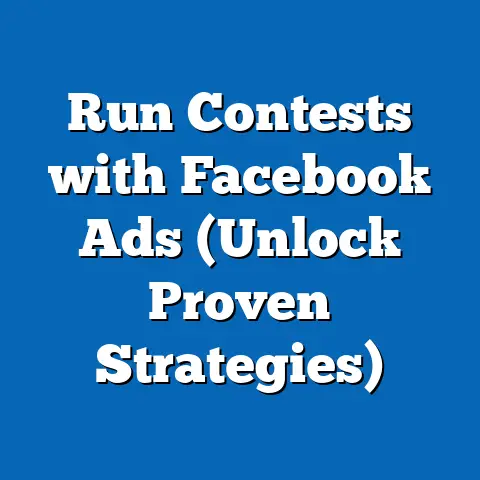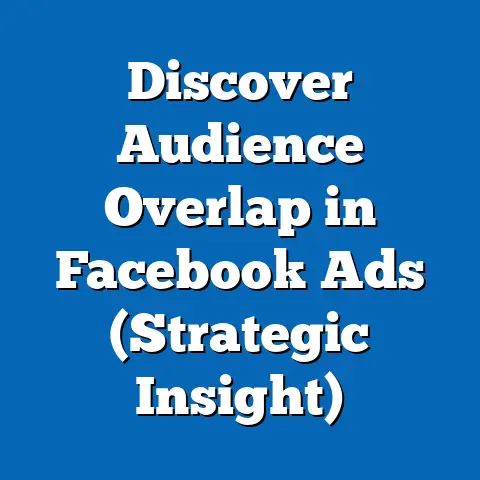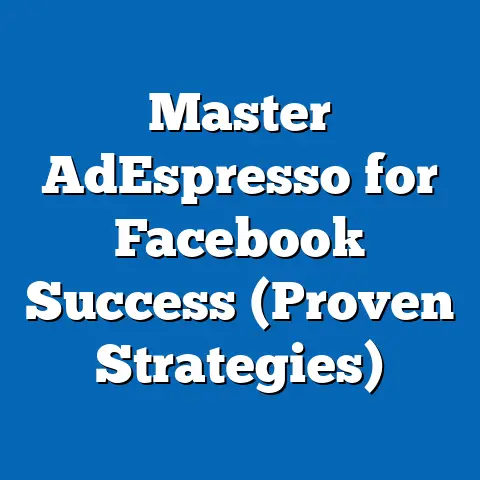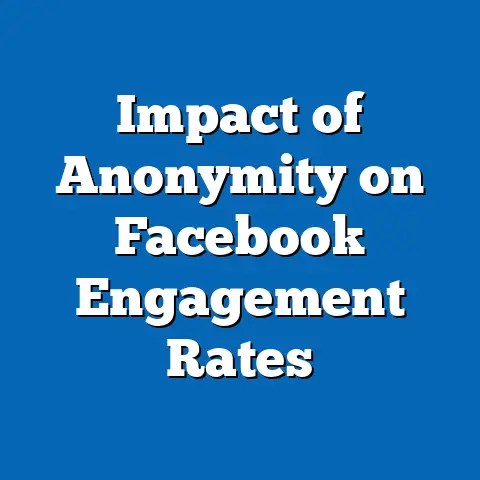Transform Facebook Ads with Smart Attribution Tactics (Proven Strategies)
The digital marketing landscape is in constant flux, a whirlwind of algorithm updates, emerging platforms, and evolving consumer behavior. In this chaotic environment, one thing remains constant: the need to understand how your marketing efforts translate into tangible results. This is where attribution comes into play, and in the realm of Facebook advertising, smart attribution is the key to unlocking true potential.
Traditional attribution models often fall short, offering a fragmented view of the customer journey. But what if you could gain a crystal-clear understanding of every touchpoint, every interaction, and every ad that influences a conversion? That’s the promise of smart attribution. It’s about going beyond simplistic models and embracing a data-driven, holistic approach that empowers you to optimize your ad spend, refine your targeting, and ultimately, drive a higher return on investment (ROI).
In this guide, I’ll walk you through the world of smart attribution for Facebook ads. I’ll break down the complexities, share proven strategies, and equip you with the knowledge you need to transform your campaigns from guesswork to data-driven precision. Get ready to delve into the power of multi-touch attribution, leverage data-driven insights, and implement actionable tactics that will revolutionize the way you approach Facebook advertising. Let’s get started.
Understanding Attribution in Facebook Ads
In the simplest terms, attribution in Facebook advertising is the process of assigning credit to specific ads, campaigns, or touchpoints for a desired outcome, such as a website purchase, lead generation, or app install. It’s about answering the fundamental question: “Which of my marketing efforts actually led to this conversion?”
Facebook offers several attribution models, each with its own way of assigning credit:
- Last-Click Attribution: This is the most common and simplest model. It gives 100% of the credit to the last ad clicked before a conversion.
- First-Click Attribution: Conversely, this model attributes the entire conversion to the first ad a user clicked.
- Linear Attribution: This model distributes credit evenly across all touchpoints in the customer journey.
- Time-Decay Attribution: This model gives more credit to touchpoints that occurred closer to the conversion, recognizing that recent interactions often have a stronger influence.
- Position-Based Attribution (U-Shaped): Assigns 40% credit to the first and last touchpoints, and the remaining 20% is distributed among the middle touchpoints.
The Challenges with Traditional Models:
While these models provide a starting point, they often present a skewed or incomplete picture. For example, last-click attribution might undervalue the initial awareness campaigns that sparked a customer’s interest, while first-click attribution might ignore the crucial role of retargeting ads that ultimately sealed the deal.
I’ve seen countless businesses rely solely on last-click attribution, only to make misguided decisions about their ad spend. They might cut back on awareness campaigns that are actually driving a significant portion of their initial leads, simply because those campaigns aren’t directly resulting in immediate conversions.
That’s where the concept of smart attribution comes in. Smart attribution recognizes that the customer journey is rarely linear. It acknowledges the complexity of interactions across multiple touchpoints and aims to provide a more accurate and comprehensive view of ad effectiveness. It’s about understanding how each touchpoint contributes to the overall conversion process, not just which touchpoint gets the final credit.
Smart attribution focuses on accurately tracking and analyzing customer interactions across multiple platforms, devices, and channels. It uses data-driven insights to understand the true impact of each ad and campaign, allowing marketers to make informed decisions about their ad spend and optimization strategies.
Key Takeaway: Understanding the limitations of traditional attribution models is crucial. Smart attribution offers a more holistic view by tracking and analyzing all touchpoints in the customer journey, leading to better-informed decisions.
The Importance of Multi-Touch Attribution
In today’s digital landscape, customers interact with brands across a multitude of channels and devices before making a purchase. They might see an ad on Facebook, click through to your website, browse your products, read reviews, and then finally convert after seeing a retargeting ad a few days later.
Multi-touch attribution recognizes this complexity and assigns credit to each touchpoint that influenced the conversion. It goes beyond the simplistic view of single-touch attribution models and provides a more nuanced understanding of the customer journey.
Why is this important?
- Understanding the Full Customer Journey: Multi-touch attribution helps you visualize the entire path a customer takes before converting. This allows you to identify the most influential touchpoints and optimize your campaigns accordingly.
- Identifying Effective Ads and Placements: By analyzing the contribution of each ad and placement, you can pinpoint the ones that are truly driving results. This enables you to allocate your budget more effectively and focus on the strategies that are working.
- Optimizing Audience Targeting: Multi-touch attribution can reveal valuable insights into which audiences are most responsive to your ads at different stages of the customer journey. This allows you to refine your targeting and deliver more relevant messages to the right people at the right time.
Example:
Let’s say you’re running a Facebook ad campaign to promote a new line of organic skincare products. A customer might initially see a video ad showcasing the benefits of your products. They click through to your website but don’t make a purchase. A few days later, they see a retargeting ad featuring a special discount. This time, they convert and buy a product.
Using last-click attribution, the retargeting ad would receive all the credit for the conversion. However, multi-touch attribution would recognize the role of the initial video ad in creating awareness and driving initial interest. It would assign a portion of the credit to both ads, providing a more accurate representation of their combined impact.
Implementing Multi-Touch Attribution:
Implementing multi-touch attribution requires a combination of tools and strategies:
- Facebook Attribution: Facebook offers its own attribution tool, which allows you to track conversions across different devices and platforms. It integrates seamlessly with your Facebook ads and provides valuable insights into the customer journey.
- Third-Party Analytics Tools: Tools like Google Analytics, Mixpanel, and Kissmetrics offer advanced attribution modeling and reporting capabilities. They can track customer interactions across multiple channels, providing a more comprehensive view of the customer journey.
- Customer Relationship Management (CRM) Systems: Integrating your CRM system with your Facebook ads allows you to track the entire customer lifecycle, from initial ad click to final purchase and beyond. This provides valuable insights into customer behavior and helps you optimize your campaigns for long-term success.
I remember working with a client who was struggling to understand why their Facebook ad campaigns weren’t generating the results they expected. After implementing multi-touch attribution, we discovered that their initial awareness campaigns were actually driving a significant number of leads, but those leads weren’t converting into sales until much later in the customer journey. By optimizing their retargeting campaigns and nurturing their leads more effectively, we were able to significantly increase their overall ROI.
Key Takeaway: Multi-touch attribution is essential for understanding the complex customer journey and optimizing your Facebook ad campaigns. By assigning credit to each touchpoint, you can gain a more accurate view of ad effectiveness and make data-driven decisions about your ad spend and targeting strategies.
Leveraging Data-Driven Insights
Smart attribution isn’t just about tracking touchpoints; it’s about understanding the why behind the data. It’s about extracting actionable insights that can inform your ad strategies and drive better results. This requires a deep dive into data analysis, focusing on relevant metrics and KPIs.
Key Metrics and KPIs:
- Cost Per Acquisition (CPA): This metric measures the cost of acquiring a new customer through your Facebook ads. It’s a crucial indicator of ad efficiency and helps you determine whether your campaigns are generating a positive ROI.
- Return on Ad Spend (ROAS): This metric measures the revenue generated for every dollar spent on Facebook ads. It’s a key indicator of profitability and helps you assess the overall effectiveness of your campaigns.
- Attribution Conversion Rate: This metric measures the percentage of users who convert after interacting with your Facebook ads. It provides insights into the effectiveness of your ads in driving conversions.
- Customer Lifetime Value (CLTV): While not directly a Facebook Ads metric, understanding the CLTV of customers acquired through Facebook is crucial for determining the long-term value of your campaigns.
- Assisted Conversions: This metric identifies the touchpoints that contributed to a conversion but weren’t the final click. It highlights the importance of top-of-funnel campaigns and their role in the customer journey.
Advanced Analytics Tools and Platforms:
To effectively gather and interpret data, you need the right tools. Here are some popular options:
- Facebook Analytics: Facebook’s built-in analytics platform provides valuable insights into user behavior and campaign performance. It allows you to track conversions, analyze audience demographics, and identify trends.
- Google Analytics: Integrating Google Analytics with your Facebook ads allows you to track website traffic and conversions generated by your campaigns. It provides a more comprehensive view of the customer journey across multiple channels.
- Mixpanel: This platform offers advanced event tracking and user segmentation capabilities. It allows you to analyze user behavior in detail and identify patterns that can inform your ad strategies.
- Tableau: A data visualization tool that allows you to create interactive dashboards and reports, making it easier to understand and share your data.
Case Study:
I once worked with an e-commerce company that was struggling to improve its Facebook ad performance. They were running a variety of campaigns, but they weren’t sure which ones were actually driving results.
After implementing a robust data analysis strategy, we discovered that their retargeting campaigns were generating a high ROAS, but their initial awareness campaigns were underperforming. However, when we looked at assisted conversions, we realized that the awareness campaigns were actually contributing to a significant number of conversions later in the customer journey.
Based on these insights, we adjusted their budget allocation, focusing more on optimizing the awareness campaigns and nurturing the leads they were generating. As a result, they saw a significant increase in overall ROAS and a substantial improvement in their Facebook ad performance.
Key Takeaway: Data analysis is the cornerstone of smart attribution. By tracking relevant metrics, utilizing advanced analytics tools, and extracting actionable insights, you can optimize your Facebook ad campaigns and drive better results. Don’t just collect data; interpret it and use it to inform your decisions.
Implementing Smart Attribution Tactics
Now that you understand the importance of multi-touch attribution and data-driven insights, let’s dive into the practical steps for implementing smart attribution tactics in your Facebook ads.
Step 1: Setting Clear Objectives and Goals:
Before you start tracking and analyzing data, it’s essential to define your objectives and goals. What do you want to achieve with your Facebook ad campaigns? Are you trying to increase brand awareness, generate leads, or drive sales?
Your objectives should be specific, measurable, achievable, relevant, and time-bound (SMART). For example, instead of saying “increase brand awareness,” you might say “increase website traffic from Facebook ads by 20% in the next quarter.”
Step 2: Choosing the Right Attribution Model:
Selecting the right attribution model is crucial for accurately measuring the impact of your ads. While multi-touch attribution is generally recommended, the specific model you choose will depend on your business needs and objectives.
Consider the following factors:
- Customer Journey Complexity: If your customer journey is relatively simple and straightforward, a simpler model like time-decay attribution might be sufficient. However, if your customer journey is complex and involves multiple touchpoints, a more sophisticated model like position-based attribution might be more appropriate.
- Marketing Goals: If your primary goal is to drive immediate sales, you might focus on models that give more credit to the last touchpoint. However, if your goal is to build brand awareness and generate leads, you might focus on models that give more credit to the first touchpoint or to assisted conversions.
- Data Availability: The more data you have, the more sophisticated your attribution model can be. If you have limited data, you might start with a simpler model and gradually move to a more complex model as you gather more information.
Step 3: Integrating Third-Party Analytics Tools:
While Facebook Attribution provides valuable insights, integrating third-party analytics tools can give you a more comprehensive view of the customer journey. Tools like Google Analytics, Mixpanel, and Kissmetrics offer advanced attribution modeling and reporting capabilities.
Make sure to properly configure your tracking codes and event tracking to accurately capture customer interactions across different channels.
Step 4: Continuously Testing and Optimizing:
Smart attribution is an ongoing process, not a one-time fix. You need to continuously test and optimize your ad strategies based on the attribution data you collect.
- A/B Testing: Experiment with different ad creatives, targeting options, and bidding strategies to see what works best.
- Campaign Optimization: Regularly review your campaign performance and make adjustments as needed. This might involve pausing underperforming ads, increasing bids on high-performing ads, or refining your targeting options.
- Audience Segmentation: Segment your audience based on their behavior and preferences, and tailor your ads accordingly.
- Landing Page Optimization: Ensure that your landing pages are optimized for conversions. This might involve improving the design, simplifying the checkout process, or adding compelling calls to action.
Real-World Success Stories:
I’ve seen firsthand how smart attribution can transform Facebook ad performance. One client, a subscription box company, was able to increase their ROAS by 30% after implementing multi-touch attribution and optimizing their campaigns based on data-driven insights. They discovered that their video ads were highly effective at generating leads, but those leads weren’t converting into sales until much later in the customer journey. By optimizing their retargeting campaigns and nurturing their leads more effectively, they were able to significantly improve their overall ROI.
Another client, a real estate company, was able to reduce their CPA by 25% after implementing smart attribution tactics. They discovered that their mobile ads were underperforming compared to their desktop ads. By optimizing their mobile ads and targeting options, they were able to significantly improve their mobile ad performance and reduce their overall CPA.
Key Takeaway: Implementing smart attribution tactics requires a strategic approach that involves setting clear objectives, choosing the right attribution model, integrating third-party analytics tools, and continuously testing and optimizing your campaigns. By following these steps, you can unlock the full potential of your Facebook ads and drive better results.
Future Trends in Attribution and Facebook Advertising
The world of attribution is constantly evolving, driven by changes in consumer behavior, technology, and data privacy regulations. As we look to the future, several trends are poised to shape the way we approach attribution in Facebook advertising.
- AI and Machine Learning: Artificial intelligence (AI) and machine learning (ML) are already playing a significant role in attribution, and their influence will only continue to grow. AI-powered attribution models can analyze vast amounts of data to identify complex patterns and predict the impact of different touchpoints with greater accuracy. They can also automate the optimization process, making it easier to improve campaign performance.
- Privacy-Focused Attribution: As data privacy regulations become stricter, marketers will need to find new ways to track and attribute conversions without compromising user privacy. This might involve using aggregated data, anonymized identifiers, or privacy-enhancing technologies like differential privacy.
- Cross-Channel Attribution: As consumers interact with brands across an ever-expanding range of channels, the need for cross-channel attribution will become even more critical. This involves tracking and attributing conversions across all marketing channels, including Facebook ads, Google Ads, email marketing, social media, and offline advertising.
- Value-Based Attribution: Instead of simply assigning credit to touchpoints based on their position in the customer journey, value-based attribution assigns credit based on the actual value that each touchpoint delivers. This might involve considering factors like the customer’s lifetime value, the revenue generated by each touchpoint, or the level of engagement with each touchpoint.
I believe that AI and Machine Learning will play a crucial role in the future of attribution. With the increasing complexity of the customer journey, it’s becoming impossible for humans to manually analyze all the data and identify the most influential touchpoints. AI-powered attribution models can automate this process, providing marketers with more accurate and actionable insights.
The Future of Facebook Advertising:
Facebook advertising is also evolving rapidly, with new ad formats, targeting options, and features being introduced all the time. As Facebook continues to innovate, smart attribution will become even more essential for maximizing the effectiveness of your campaigns.
By staying ahead of the curve and embracing these emerging trends, you can ensure that your Facebook ad campaigns are always optimized for success.
Key Takeaway: The future of attribution is being shaped by AI, privacy concerns, the need for cross-channel tracking, and a focus on value. Staying informed about these trends and adapting your strategies accordingly is crucial for long-term success in Facebook advertising.
Conclusion
In the competitive landscape of digital marketing, understanding and implementing smart attribution tactics is no longer a luxury; it’s a necessity. By moving beyond traditional attribution models and embracing a data-driven approach, you can unlock the true potential of your Facebook ad campaigns.
I’ve shared proven strategies and actionable insights that will empower you to:
- Gain a deeper understanding of the customer journey.
- Optimize your ad spend and targeting strategies.
- Drive a higher return on investment (ROI).
- Stay ahead of the curve in the ever-evolving world of attribution.
The key takeaways are clear: embrace multi-touch attribution, leverage data-driven insights, and continuously test and optimize your campaigns. The future of attribution is here, and it’s powered by AI, privacy-focused solutions, and a relentless focus on value.
Don’t wait any longer. Start implementing these smart attribution techniques today and transform your Facebook ad campaigns from guesswork to data-driven precision. The competitive digital landscape demands it, and your business deserves it. Take the first step now and unlock the full potential of your Facebook advertising efforts!

